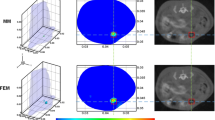Abstract.
Laser- and sensitive charge-coupled device technology together with advanced mathematical modelling of photon propagation in tissue has prompted the development of novel optical imaging technologies. Fast surface-weighted imaging modalities, such as fluorescence reflectance imaging (FRI) and 3D quantitative fluorescence-mediated tomography have now become available [1, 2]. These technical advances are paralleled by a rapid development of a whole range of new optical contrasting strategies, which are designed to generate molecular contrast within a living organism. The combination of both, technical advances of light detection and the refinement of optical contrast media, finally yields a new spectrum of tools for in vivo molecular diagnostics. Whereas the technical aspects of optical imaging are covered in more detail in a previous review article in "European Radiology" [3], this article focuses on new developments in optical contrasting strategies and design of optical contrast agents for in vivo diagnostics.
Similar content being viewed by others
Author information
Authors and Affiliations
Additional information
Electronic Publication
Rights and permissions
About this article
Cite this article
Bremer, C., Ntziachristos, V. & Weissleder, R. Optical-based molecular imaging: contrast agents and potential medical applications. Eur Radiol 13, 231–243 (2003). https://doi.org/10.1007/s00330-002-1610-0
Received:
Accepted:
Issue Date:
DOI: https://doi.org/10.1007/s00330-002-1610-0




